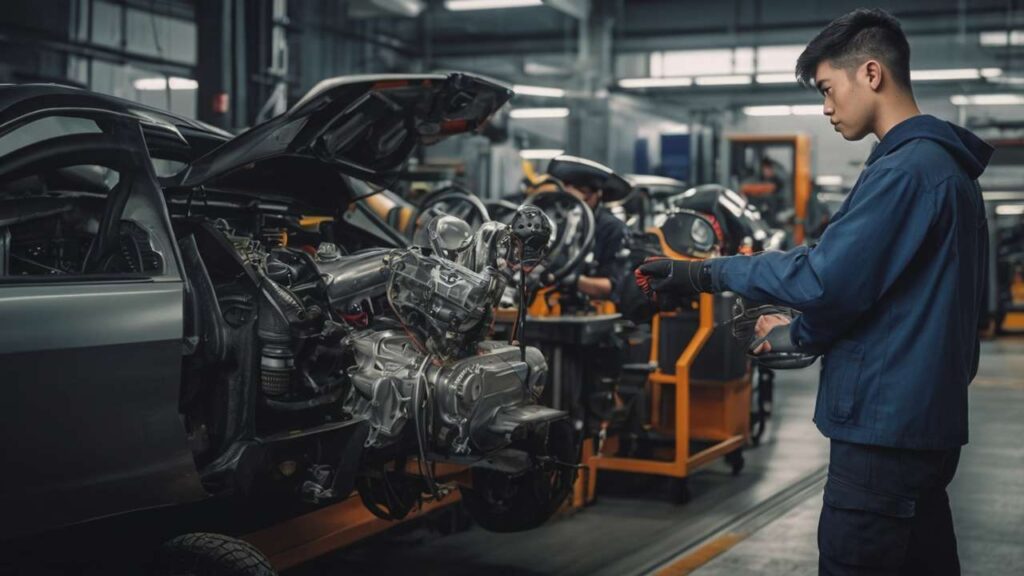If you’ve ever stepped on your brakes and felt a strange vibration, or maybe heard that faint squeal echoing off the road, you probably wondered if it’s time to see a mechanic. For most North Carolina drivers, the idea of going in for a professional brake inspection feels like a mystery. People know it costs money, they know it’s important, but they don’t always know what actually happens in the inspection bay. That confusion can make drivers hesitate, and hesitation in brake care almost always ends in negative outcomes—bigger bills, unsafe driving conditions, and unnecessary stress.
From my own experience, the first time I saw a mechanic pull apart my rotors, I was honestly shocked at how much detail goes into an inspection. It isn’t just a “look and guess” routine. It’s a methodical, trusted process performed by experts who know what to look for. Understanding the steps can help you see the real value in paying for this service and build confidence that your vehicle is in reliable hands.
Before we dive into the step-by-step, let’s make one thing clear: ignoring brake issues can be dangerous and very expensive. As one Raleigh-based specialist told me, “Brakes don’t fail overnight. They give you hints, but the longer you delay, the louder your wallet screams.” That’s why knowing what to expect is crucial.
Step 1: The Initial Assessment
A professional brake inspection in North Carolina usually begins with a quick conversation. A trusted mechanic will ask you questions about symptoms: Have you noticed grinding, squeaking, or pulling to one side? Do you feel vibrations in the steering wheel when braking? These early details guide the inspection.
After that, a test drive is often performed. Mechanics listen for noises, pay attention to pedal feel, and note stopping distances. This test drive helps replicate real-world conditions that you, the driver, experience daily. Many reliable shops, such as North Carolina’s top-quality brake service experts, consider this an essential part of the inspection because it sets the baseline before the car is even lifted.
Step 2: Visual and Physical Checks
Once the vehicle is raised, the mechanic gets into the details. This part is fascinating to watch if you’ve never seen it. They’ll remove the wheels and begin looking at several core components:
- Brake Pads – Checked for thickness, cracks, glazing, or uneven wear. A pad less than 3mm is considered unsafe.
- Rotors (or Drums) – Inspected for warping, grooves, or discoloration that suggest overheating.
- Calipers – Examined for seized pistons, uneven application, or damaged dust boots.
- Brake Hoses and Lines – Checked for leaks, swelling, or cracks.
- Brake Fluid – Both the level and condition are examined. Old, dark, or moisture-filled fluid is a red flag.
- Master Cylinder – Inspected for leaks or internal wear that could compromise pressure.
Each component tells a story. For example, uneven pad wear may indicate a sticking caliper. Grooved rotors could reveal aggressive driving or missed maintenance. A low fluid reservoir often signals a leak somewhere in the system.
Step 3: What They’re Looking For
A professional brake inspection isn’t just about “is it broken?” It’s about how long it will last. A mechanic checks rotor thickness with a micrometer, ensuring it hasn’t fallen below the safe limit. They measure pad thickness, look for brake dust patterns, and even inspect wheel bearings that affect braking performance.
As one trusted expert in Charlotte told me, “We’re not just replacing parts—we’re reading the wear like a book. It tells us how the driver uses the car, and that guides better repairs.”
This is where common driver misconceptions pop up. Many think squealing automatically means pads are gone. But sometimes it’s just cheap pad material. That’s why professional eyes matter.
Step 4: The Follow-Up with the Customer
Here’s the part that builds trust: a good mechanic won’t just hand you a bill. They’ll show you the worn pads, the scored rotors, or the darkened brake fluid. Seeing the damage yourself makes the need for service real, not just a sales pitch.
Reliable shops also provide options. Maybe the rotors can be resurfaced instead of replaced. Maybe a fluid flush is enough for now, with pads replaced at the next oil change. This transparent process is why customers return to specialists in North Carolina.
Why It Matters: Beyond the Checklist
A professional brake inspection in North Carolina isn’t just about safety—it’s about saving money and headaches. Neglecting small issues leads to bigger repairs. For example, ignoring thin pads will damage rotors, doubling your repair bill.
This connects to a bigger topic: The Early Warning Signs of Brake Trouble: Don’t Wait for the Grinding Noise. By the time brakes grind, the damage is advanced. Squeaks, soft pedals, or pulling are earlier and cheaper to fix.
Another common misconception is the DIY route. Many drivers watch a video and think replacing pads is easy. But as DIY vs. Pro: Why Brake Repair is Best Left to North Carolina’s Experts explains, mistakes like improper torque, contaminated fluid, or misaligned calipers can put lives at risk. Brakes aren’t the place to cut corners.
Brake Fluid: The Unsung Hero
Brake inspections also highlight something most drivers never think about—fluid. As covered in Brake Fluid 101: The Unsung Hero of Your Vehicle’s Stopping Power, this fluid absorbs moisture over time, lowering boiling points and risking brake fade. Professionals use tools like test strips to measure copper content, which signals corrosion. It’s one of those invisible issues you’d never catch without an expert.
Understanding Your Braking System
Not all brakes are the same. Some vehicles still use drum brakes on the rear wheels, while most modern cars rely on disc brakes. An inspection explains the differences. As discussed in Disc Brakes vs. Drum Brakes: Understanding Your Vehicle’s Braking System, drums often last longer but perform worse under heavy loads. A mechanic can explain why your car’s setup matters for maintenance costs and performance.
The Cost of Waiting
Every professional mechanic I’ve met repeats the same truth: delaying brake repairs costs more. The Cost of Waiting: How Ignoring Brake Issues Can Empty Your Wallet is no exaggeration. Rotors, calipers, even wheel bearings can be ruined by ignored brake problems. An inspection is cheaper than a tow truck, new rotors, or an accident deductible.
A Real-Life Case Study
One Greensboro driver I spoke with shared how she thought her squeaky brakes were “just dust.” She skipped inspection for six months. By the time she went in, her calipers had seized, rotors were scarred, and her $200 pad job turned into a $1,200 overhaul. She told me, “If I had gone in earlier, it would’ve been a quick fix. I learned the hard way.”
Future Topics to Explore
Professional brake inspections often lead into other maintenance conversations. Drivers ask about ABS sensors, emergency brake adjustments, or even performance brake upgrades. These could inspire future posts like:
- How ABS Sensors Protect You in Sudden Stops
- The Role of Parking Brakes in Modern Cars
- Upgrading to Performance Brakes: Is It Worth It?
These subjects naturally build from the inspection conversation and keep readers engaged beyond the basics.
FAQs
1. How often should I get a professional brake inspection in North Carolina?
Most experts recommend every 12,000 miles or once a year, but extreme driving conditions may require sooner.
2. Can I drive with squeaky brakes until my next oil change?
It depends. Some squeaks are harmless, but others indicate worn pads. A quick inspection is the safest bet.
3. Is brake fluid replacement always necessary during inspection?
Not always, but fluid condition is checked. If it’s dark, contaminated, or old, flushing it out improves safety and performance.
A professional brake inspection in North Carolina is one of the smartest investments you can make for your car and your safety. It’s not about paying for something mysterious—it’s about paying for expertise, transparency, and long-term savings. The process uncovers small issues before they become emergencies and gives you confidence every time you press the pedal.
For drivers looking for reliable, trusted care, visit top-quality brake service experts in North Carolina. Explore more insights in our Brake Services category or read helpful tips across ProServiceTips.com.
If this article gave you clarity, don’t keep it to yourself—hit the share buttons below and help other drivers stay safe on North Carolina’s roads.


